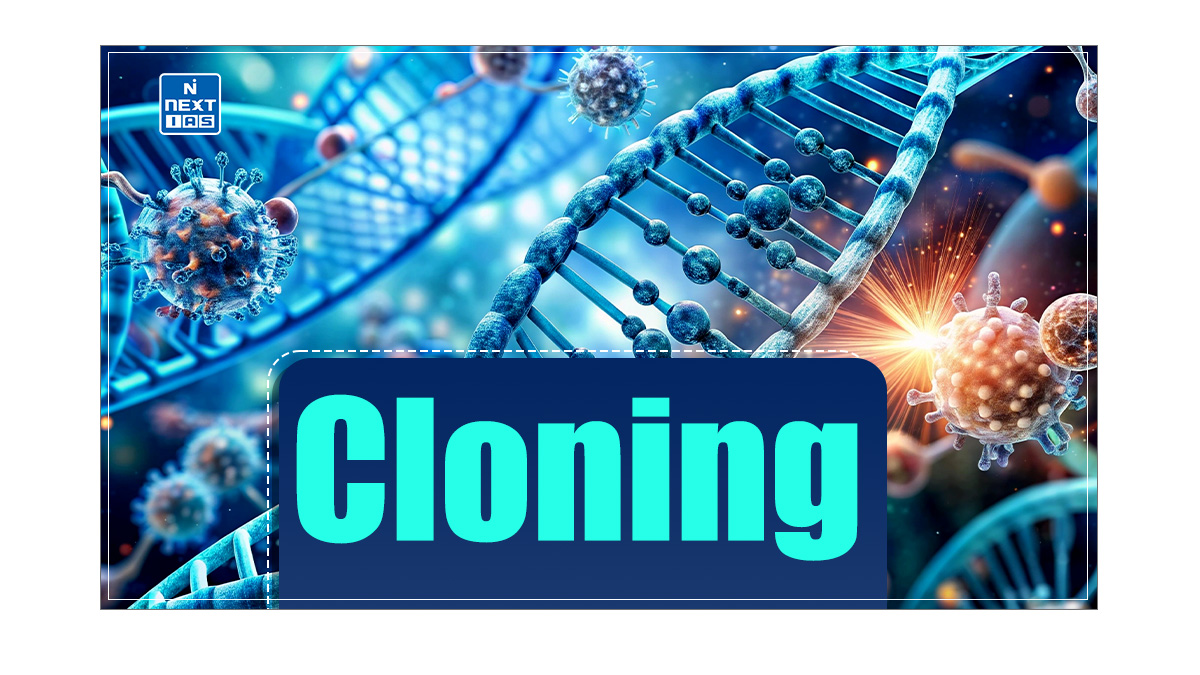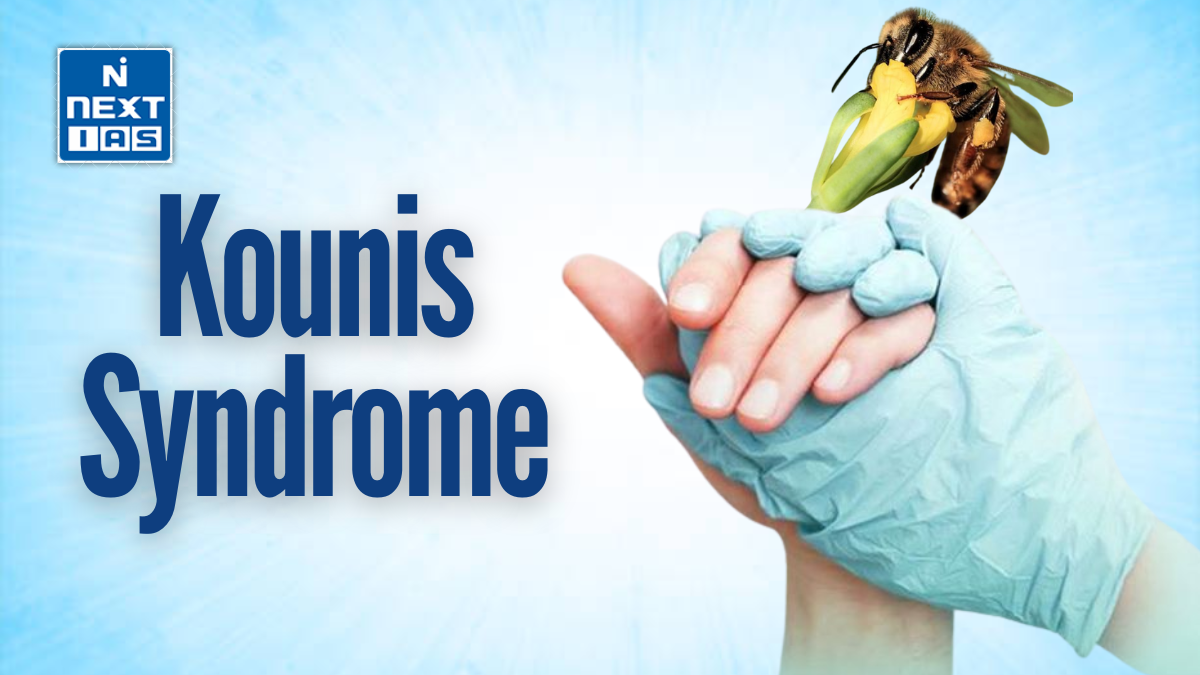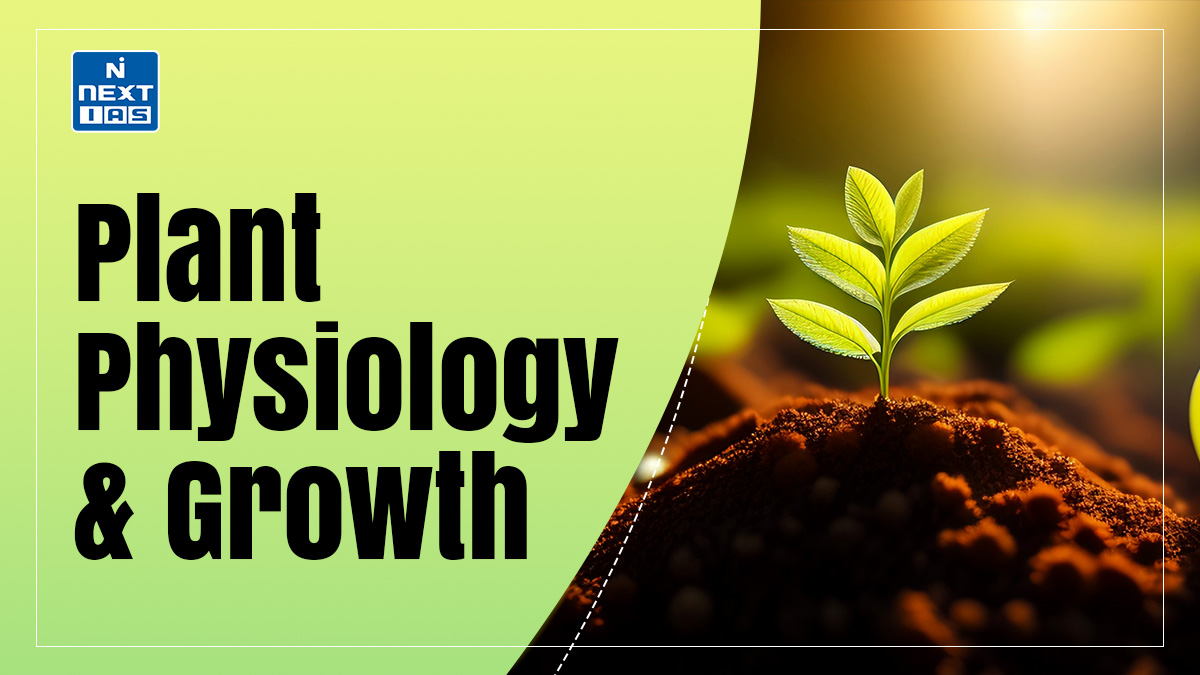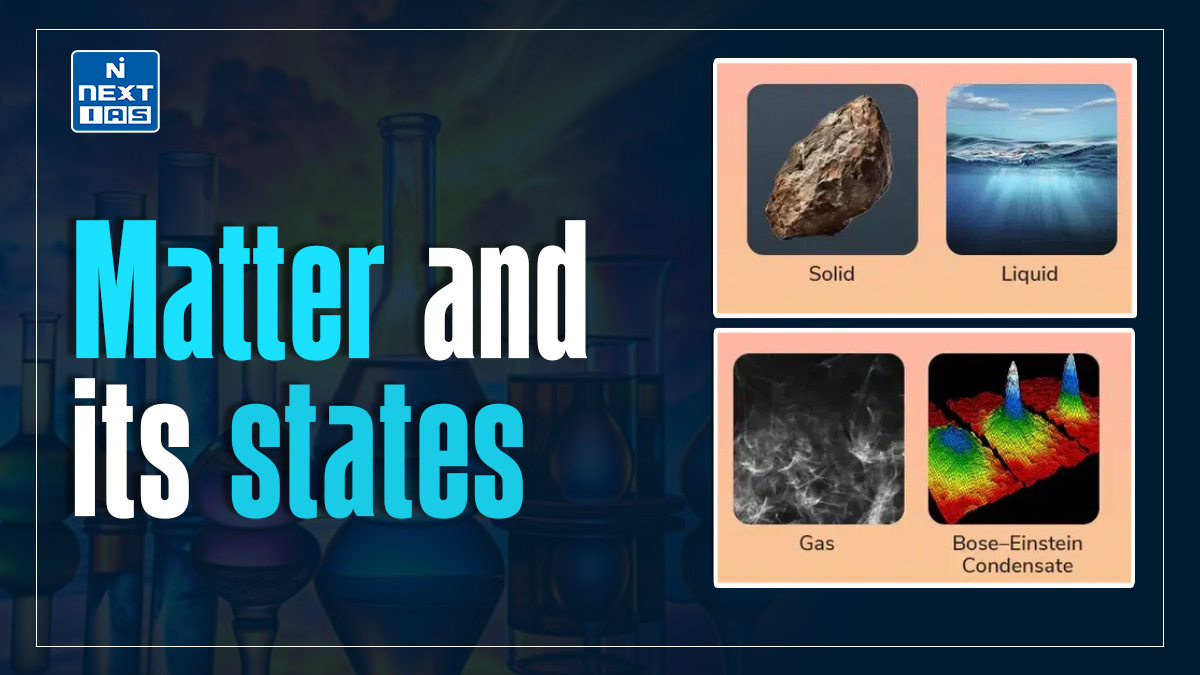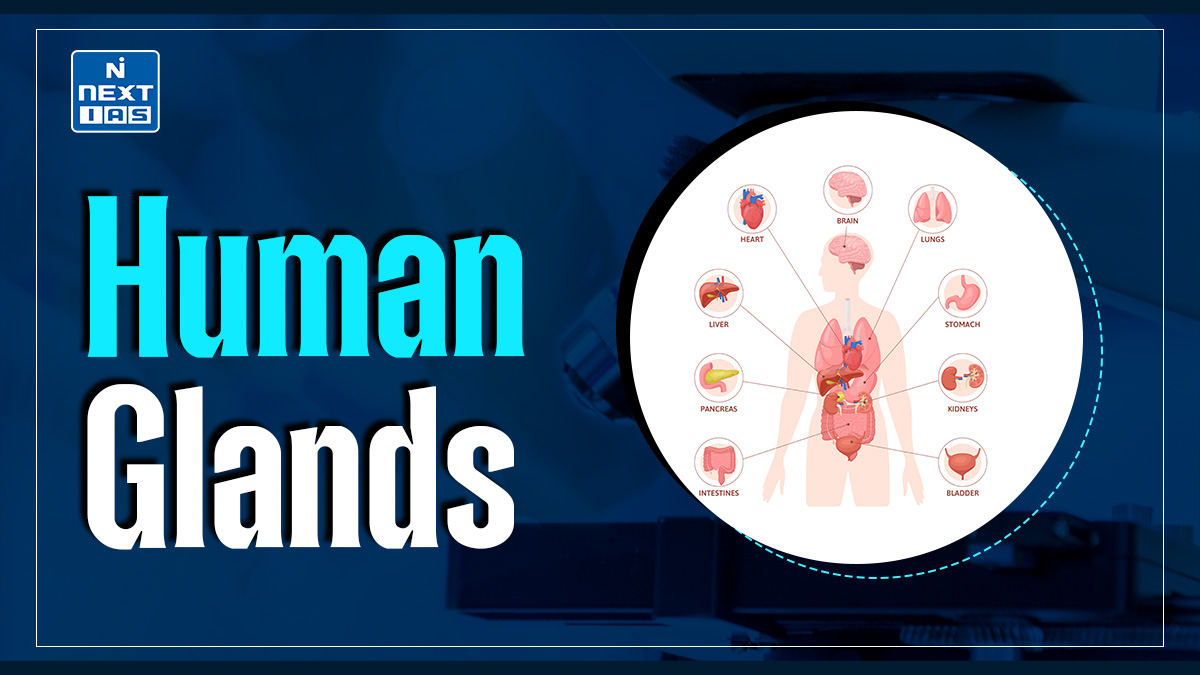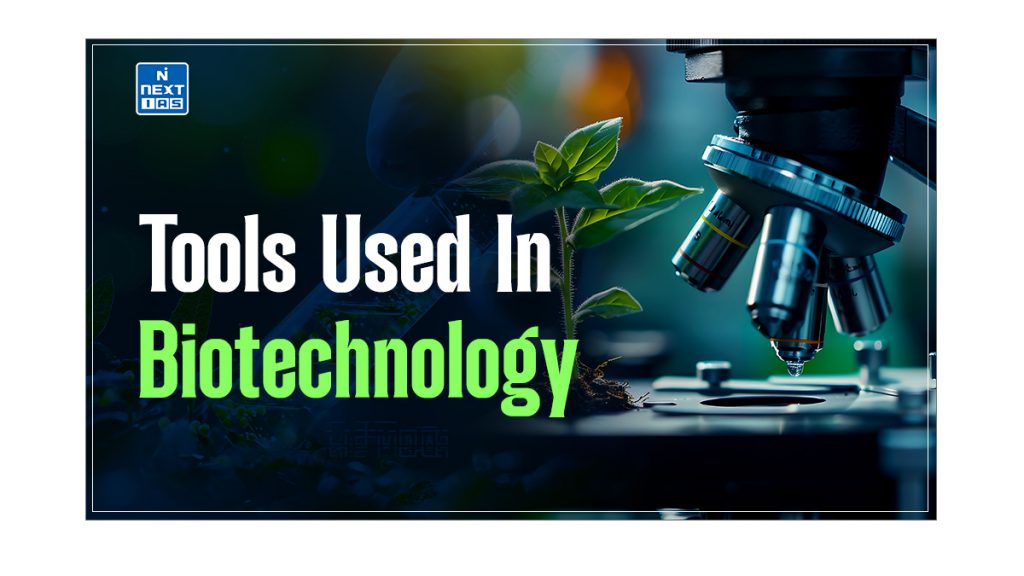
Biotechnology utilizes a variety of tools and techniques to manipulate biological systems for research and development. Tools used in Biotechnology include CRISPR for gene editing, recombinant DNA technology for protein production, PCR for DNA amplification, and bioinformatics for data analysis. These tools enable advancements in medicine, agriculture, and environmental science. This article aims to study about the tools used in Biotechnology and Enzymes, Vectors, Competent Host, Direct Transfer of Genes, Mediated Transfer of Genes, Micro Injection & Gene Gun.
Enzymes
Enzymes are highly specialized proteins which act as catalysts of biological systems. It can be of various types like:
Restriction Enzyme
An enzyme from bacteria that can recognize specific base sequences in DNA and cut the DNA at that site. A restriction enzyme acts as a biochemical scissors. Bacteria use restriction enzymes to defend against bacterial viruses called bacteriophages (or Phage).
When a phage infects a bacteria it inserts its DNA into the bacteria so that it might be replicated. The restriction enzyme prevents replication of the phage DNA by cutting it into many pieces. Restriction enzymes were named for their ability to restrict, or limit, the number of strains of bacteriophage that can infect bacteria.
DNA Ligases
DNA Ligases are primarily responsible for joining the gaps that form in DNA during replication, DNA repair, and recombination. In other words, DNA Ligase can join matching sticky ends of DNA pieces from different sources that have been cut by the same Enzyme restriction.
DNA Polymerases
It is a Special Class of Enzymes found in all living Organisms. It is used to replicate DNA and to help in the repair and maintenance of DNA. The enzyme is critical to the transmission of genetic information from generation to generation.
Vectors
Vector is used as a vehicle for transfer of foreign genes to get introduced into and become a part of the host cell, e.g. a bacteriophage, plasmid, or other agent that transfers genetic material from one cell to another.
Salient features of vectors are:
- It should contain an origin of replication so that it is able to multiply in the host cell. It should incorporate a selectable marker, which will allow to select those host cells that contain the vector from amongst those which do not.
- The vector must also have at least one unique restriction endonuclease recognition site to enable foreign DNA to be inserted into the vector during the generation of a recombinant DNA molecule and the vector should be relatively small in size.
It can be of various types like:
Plasmids
Plasmids are DNA molecules, generally circular, which can replicate in bacterial and eukaryotic cells. Plasmids are used in molecular studies of various organisms and are important in many branches of biology, medicine, ecology and evolution as well as basic research in microbiology, molecular biology and structural biology.
Eukaryote: Any cell or organism that possesses a clearly defined nucleus. The eukaryotic cell has a nuclear membrane that surrounds the nucleus, in which the well-defined chromosomes (bodies containing the hereditary material) are located.
Bacteriophages as Vectors
Bacteriophages provide a source of cloning vectors. A phage has a linear DNA molecule, a single break will generate two fragments, which are later joined together with foreign DNA to generate a chimeric phage particle. They are more useful when the size of Foreign DNA is very large.
Bacterial Artificial Chromosomes
They help in transferring large amounts of DNA and study larger genes. It can also live in bacterial culture instead of endemic mammal cell cultures. They can also be helpful in the development of Vaccines. Their stability and ease of handling have made these vectors increasingly popular for whole genome mapping and sequencing projects from microbes, plants, and animals.
The growth of cells, tissues and organs, outside the organism in an artificial media of salts and nutrients is called tissue culture.
Yeast Artificial Chromosomes
They are the products of recombinant DNA cloning methodology to isolate and propagate large segments of DNA in a yeast host. They are capable of replicating and being selected in common bacterial hosts as well as yeast hosts.
Competent Host
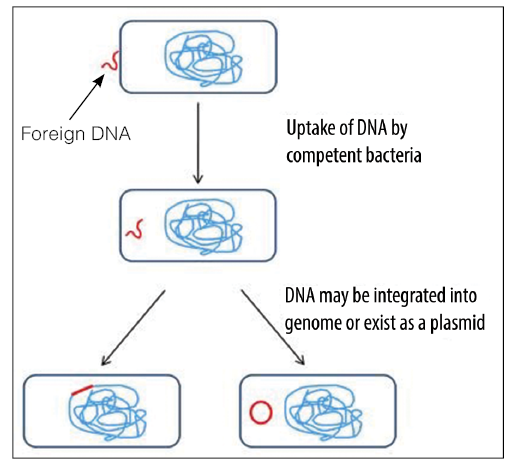
- Competent hosts are the bacteria which have the ability to take up free, extracellular genetic material. The phenomenon of transformation has been widely used in molecular biology. As they are easily grown in large numbers, transformed bacteria may be used to make multiple copies of the DNA, in cloning procedures, or to express large amounts of proteins and enzymes.
Vector-less or Direct Transfer of Genes
Foreign Genes can be also transferred directly by the following methods:
Transfection by Electroporation
- Electroporation involves the use of high-voltage electric shocks to introduce DNA into cells. It can be used with most cell types. It requires fewer steps and is easier than alternate techniques. Electroporation makes use of the fact that the cell membrane acts as an electrical capacitor that is unable to pass current (except through ion channels). Subjecting membranes to a high-voltage electric field results in their temporary breakdown and the formation of pores that are large enough to allow macromolecules (as well as smaller molecules such as ATP) to enter or leave the cell.
- During the time that the pores are open, nucleic acid can enter the cell and ultimately the nucleus. Linear DNA with free ends is more recombinogenic and more likely to be integrated into the host chromosome to yield stable transformants.
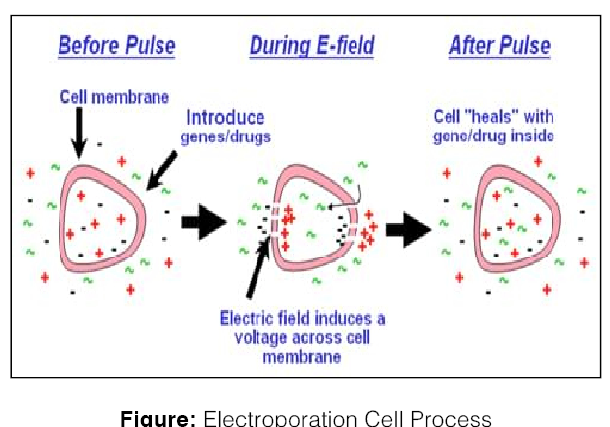
Chemical Mediated Transfer
- Charged chemical compounds can be used to facilitate DNA transfer directly to the cell. These synthetic compounds are introduced near the vicinity of recipient cells thereby disturbing the cell membranes, widening the pore size and allowing the passage of the DNA into the cell. The ideal chemical should have the ability to protect DNA against nuclease degradation, transport DNA to the target cells, facilitate transport of DNA across the plasma membrane, and promote the import of DNA into the nucleus.
- One example can be of Calcium Phosphate mediated DNA transfer:
- This method is based on the precipitation of plasmid DNA and calcium ions by their interaction. In this method, the precipitates of calcium phosphate and DNA, being small and insoluble, can be easily adsorbed on the surface of a cell. This precipitate is engulfed by cells through endocytosis and the DNA gets integrated into the cell genome resulting in stable or permanent transfection.
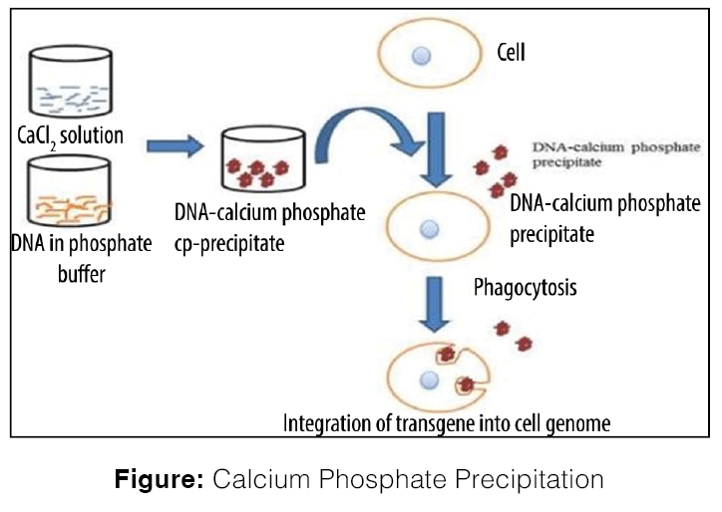
Microinjection
- Microinjection is a technique of delivering foreign DNA into a living cell through a glass micropipette.
- In DNA microinjection, also known as pronuclear microinjection, a very fine glass pipette is used to manually inject DNA from one organism into the eggs of another. The best time for injection is early after fertilization when the ova has two pronuclei. When the two fuse to form a single nucleus, the injected DNA may or may not be taken up. The process is done under a powerful microscope.
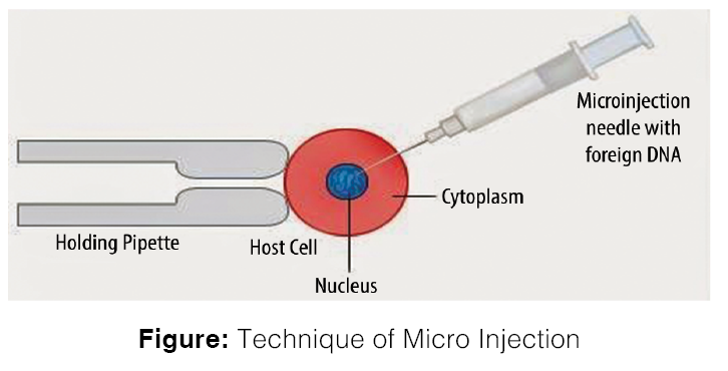
Gene Gun
- Gene Gun is a device to inject cells with genetic information. The payload is an elemental particle of a heavy metal coated with plasmid DNA. The gene gun is able to transform almost any type of cell, including that of plants, and does not work only on genetic material of the nucleus.
- First developed in 1984, Gene guns operate on the principle that under certain conditions, DNA and other genetic material become “sticky”, readily adhering to biologically inert particles. By accelerating this DNA-particle complex in a partial vacuum and placing the target tissue within the acceleration path, DNA is effectively introduced. Another important use of the DNA gun involves the transformation of organelles. For the first time, researchers have transformed yeast mitochondria and the chloroplasts of Chlamydomonas (algae) using this technology.
Advantages of Tools used in Biotechnology
There are some key advantages of the tools used in biotechnology:
- Precision: Tools like CRISPR and restriction enzymes allow for targeted modifications in DNA, enabling precise genetic alterations.
- Efficiency: Techniques such as PCR (Polymerase Chain Reaction) enable rapid amplification of DNA, making it quicker to obtain large quantities of genetic material for analysis.
- Versatility: Vectors like plasmids and artificial chromosomes can be used across various organisms, facilitating research in multiple biological contexts.
- Scalability: Methods such as microbial fermentation allow for large-scale production of proteins, enzymes, and other bioproducts.
- Enhanced Research: Bioinformatics tools streamline data analysis and interpretation, supporting advances in genomics and proteomics.
- Improved Therapeutics: Gene therapy and biopharmaceuticals derived from biotechnological processes lead to more effective treatments for diseases.
- Sustainable Solutions: Biotechnological tools can contribute to sustainable agriculture and biofuels, reducing reliance on chemical methods and fossil fuels.
- Innovation in Diagnostics: Advanced diagnostic tools enhance disease detection and monitoring, leading to better healthcare outcomes.
These advantages highlight the transformative impact of biotechnology in various fields, from medicine to agriculture and beyond.
Disadvantages of Tools used in Biotechnology
There are some key disadvantages of the tools used in biotechnology:
- Ethical Concerns: Genetic modifications raise ethical questions regarding the manipulation of life forms, especially in humans and animals.
- Potential Risks: Techniques like CRISPR can lead to unintended genetic changes, resulting in unforeseen consequences for organisms.
- Regulatory Challenges: The rapid advancement of biotechnological tools often outpaces regulatory frameworks, leading to uncertainties in safety and compliance.
- Cost: Some biotechnological tools and methods can be expensive to develop and implement, limiting access for smaller research institutions or developing countries.
- Environmental Impact: The introduction of genetically modified organisms (GMOs) can disrupt local ecosystems and biodiversity if not carefully managed.
- Public Misunderstanding: Misinformation about biotechnology can lead to public fear and resistance, affecting policy decisions and market acceptance.
- Dependency on Technology: Over-reliance on biotechnological tools may reduce traditional knowledge and practices in agriculture and medicine.
- Intellectual Property Issues: Patent laws related to biotechnological inventions can lead to monopolies, restricting access to essential tools and technologies.
Way Forward
- Ethical Frameworks: Develop clear guidelines and regulations for responsible use.
- Public Engagement: Promote dialogue to address concerns and misconceptions.
- Sustainability Focus: Prioritize environmentally friendly solutions, like biofuels.
- Affordability and Accessibility: Make tools more accessible, especially for developing regions.
- Interdisciplinary Collaboration: Foster partnerships among scientists, ethicists, and policymakers.
- Continuous Education: Enhance training programs for researchers and practitioners.
- Innovation in Regulation: Adapt regulations to keep pace with advancements while ensuring safety.
- Focus on Precision: Invest in precise approaches to minimize risks in genetic modifications.
These strategies will help biotechnology evolve, addressing challenges and enhancing its societal benefits.
Conclusion
- Tools used in Biotechnology, such as enzymes, vectors, and various gene transfer methods, are fundamental for advancing genetic research and applications. Enzymes like restriction enzymes, DNA ligases, and polymerases facilitate the manipulation of DNA, while vectors such as plasmids and artificial chromosomes enable the introduction and replication of foreign genes in host cells.
- Techniques for direct gene transfer, including electroporation, chemical-mediated transfer, microinjection, and gene guns, further expand the possibilities for genetic engineering across various organisms. Together, these innovations are driving significant progress in fields like medicine, agriculture, and environmental science, making biotechnology a pivotal discipline in addressing contemporary challenges.
Frequently Asked Questions: Tools Used in Biotechnology
What are the new tools in biotechnology?
The emergence of new biotechnological tools (NBTs), including RNA interference (RNAi), trans-grafting, cisgenesis/intragenesis, and genome-editing techniques like zinc-finger nucleases and CRISPR/Cas9, has enabled more precise and efficient genetic modifications in plants.
What are the tools used in recombinant DNA technology?
Restriction Enzymes: These enzymes recognize specific sites in the vector’s genome where the target gene is inserted.
Endonucleases: Enzymes that cut DNA strands at internal sites.
Exonucleases: Enzymes that remove nucleotides from the ends of a DNA strand.
Ligase Enzyme: Ligase facilitates the joining of two DNA fragments by linking the sticky ends of the target gene with the vector.
Vector: A plasmid or plastid commonly serves as a carrier to introduce the desired gene.
Host: A suitable host cell that receives and incorporates the recombinant DNA.
What are some of the techniques used in biotechnology?
The three key techniques in biotechnology are: (1) Recombinant DNA Technology (Genetic Engineering), (2) Plant Tissue Culture, and (3) Transgenic Organisms (Genetically Modified Organisms).
